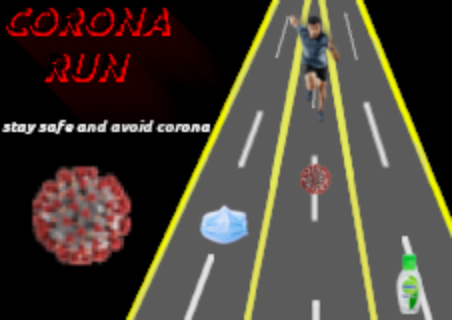Difference between revisions of "F20: Corona Run"
Proj user4 (talk | contribs) (→Team Members & Responsibilities) |
Proj user4 (talk | contribs) (→Team Members & Responsibilities) |
||
| Line 32: | Line 32: | ||
=== Team Members & Responsibilities === | === Team Members & Responsibilities === | ||
| − | * Anee Dudhia | + | * ''Anee Dudhia'' |
** | ** | ||
| − | * Ellis Makwana | + | * ''Ellis Makwana'' |
** | ** | ||
| − | * Suryanto Phienanda | + | * ''Suryanto Phienanda'' |
** [[File:prof_pic_cmpe244_f20.jpg]] | ** [[File:prof_pic_cmpe244_f20.jpg]] | ||
** | ** | ||
| − | * William Asper | + | * ''William Asper'' |
** | ** | ||
Revision as of 03:51, 20 October 2020
Contents
Grading Criteria
- How well is Software & Hardware Design described?
- How well can this report be used to reproduce this project?
- Code Quality
- Overall Report Quality:
- Software Block Diagrams
- Hardware Block Diagrams
- Schematic Quality
- Quality of technical challenges and solutions adopted.
Project Title: CORONA Run
Game Cover::
Abstract
CORONA Run is a game designed for every one to have a good time during this pandemic. Inspired by the current real-life pandemic situation and the game "Temple Run" that was designed in 2011, the main objective of this game is to avoid CORONA virus. As the game progress, the player will encounter not only the virus, but also power-ups that provides the player with temporary immunity to the virus.
Objectives & Introduction
The main objective of this project is to use SJ2 board as the center of our project. To create a properly working game, the game must be able to:
- Detect collision with CORONA virus to end the game
- Provide the player with power-ups when the player touches it
- Keep track of the score
There are some requirements that must be used when creating the game, such as:
- Utilizing FreeRTOS to run the game on SJ2 Board
- Utilizing accelerometer to control the game
Team Members & Responsibilities
- Anee Dudhia
- Ellis Makwana
- William Asper
Schedule
Show a simple table or figures that show your scheduled as planned before you started working on the project. Then in another table column, write down the actual schedule so that readers can see the planned vs. actual goals. The point of the schedule is for readers to assess how to pace themselves if they are doing a similar project.
| Week# | Date | Task | Actual |
|---|---|---|---|
| 1 | 09/16 |
|
|
| 2 | 09/18 |
|
|
| 3 | 09/26 | Project Proposal Submission | Completed |
| 4 | 10/13 |
|
|
| 5 | 10/19 |
|
|
| 6 | 10/23 |
|
|
| 7 | 10/25 |
|
|
| 8 | 10/30 |
|
|
Parts List & Cost
Give a simple list of the cost of your project broken down by components. Do not write long stories here.
Design & Implementation
The design section can go over your hardware and software design. Organize this section using sub-sections that go over your design and implementation.
Hardware Design
Discuss your hardware design here. Show detailed schematics, and the interface here.
Hardware Interface
In this section, you can describe how your hardware communicates, such as which BUSes used. You can discuss your driver implementation here, such that the Software Design section is isolated to talk about high level workings rather than inner working of your project.
Software Design
Show your software design. For example, if you are designing an MP3 Player, show the tasks that you are using, and what they are doing at a high level. Do not show the details of the code. For example, do not show exact code, but you may show psuedocode and fragments of code. Keep in mind that you are showing DESIGN of your software, not the inner workings of it.
Implementation
This section includes implementation, but again, not the details, just the high level. For example, you can list the steps it takes to communicate over a sensor, or the steps needed to write a page of memory onto SPI Flash. You can include sub-sections for each of your component implementation.
Testing & Technical Challenges
Describe the challenges of your project. What advise would you give yourself or someone else if your project can be started from scratch again? Make a smooth transition to testing section and described what it took to test your project.
Include sub-sections that list out a problem and solution, such as:
<Bug/issue name>
Discuss the issue and resolution.
Conclusion
Conclude your project here. You can recap your testing and problems. You should address the "so what" part here to indicate what you ultimately learnt from this project. How has this project increased your knowledge?
Project Video
Upload a video of your project and post the link here.
Project Source Code
References
Acknowledgement
Any acknowledgement that you may wish to provide can be included here.
References Used
List any references used in project.
Appendix
You can list the references you used.

